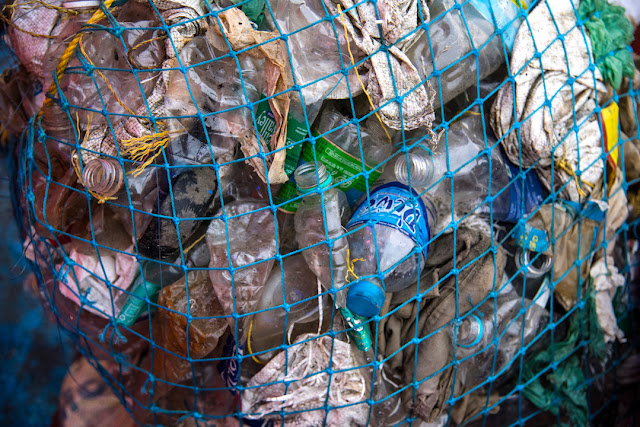
Despite adding dramatic capacity for solar and wind energy, India is not able to make the determined mindshift away from fossil fuel dependency and prevent the destruction of our last remaining forests such as Hasdeo Arand. Photo Courtesy: Alok Shukla
The Forested state of Chhattisgarh holds the key to the water security of much of Peninsular India. Managed well, it has the capacity to enhance India’s climate resilience, even as it boosts water security for millions.
The Hasdeo Arand forest that spans about 1,70,000 hectares (ha.), in northern Chhattisgarh’s Korba and Sarguja districts, is one of the largest contiguous stretches of intact forests in India. This pristine forest is the watershed of the Hasdeo-Bango reservoir and the Hasdeo river, which is a tributary of the Mahanadi river. Rich in biodiversity, with dense sal forests, rare flora and endangered fauna, it is part of a large elephant corridor for wild elephants, moving from the Gumla district in Jharkhand to Korba in Chhattisgarh.
The Hasdeo Arand region is also home to the large and vulnerable forest-dwelling adivasi community of Gonds, 90 per cent of whom are deeply dependent on forest produce, and agriculture, for their livelihoods.
However, this rich ecosystem is under threat because of the vast coal reserves it harbours over an area of 1,878 sq. km. A huge chunk, 1,502 sq. km., is forested. And roughly 80 per cent of this forested parcel includes good quality forest cover, with around 1,176 sq. km. sporting a canopy cover that exceeds 40 per cent and 116 sq. km. with an amazing 70 per cent canopy shield.
In 2009, India’s Ministry of Environment and Forest (MoEF) declared the Hasdeo Arand forest as a ‘No-Go Area’ for mining because of its irreplaceable forest cover and its potential to be expanded. Such ‘no-go’ areas represent 8.11 per cent of the total potential coal-bearing area in India and 11.50 per cent of the nation’s total explored coal-bearing area.
Then in 2011, three blocks on the “fringes” of the forest were granted stage-I approval for mining, against the advice of its own Forest Advisory Committee (FAC), which said that a section of the 841 hectares forest area to be diverted had “high ecological and forest value”. The then Minister made a commitment that the rest of Hasdeo Arand would continue to be inviolate, a ‘no-go’ area, while approving this unfortunate forest clearance. But the first axe has already struck. Bulldozers and giant excavators have moved in, families have been uprooted from ancestral lands, and precious flora and fauna is being ravaged for coal.
Of the 18 coal blocks identified, mining operations are being carried out in two blocks – Parsa East and Kete Basan (PEKB), and Chotia. Proposals for mining four other coal blocks are underway at both State and Central levels.
India is emerging as a global champion for climate action. Nationally, however, despite adding dramatic capacity for solar and wind energy, we have not been able to make the determined mindshift away from investing in new fossil fuels, including coal mining capacities.
Coal mining in Hasdeo Arand will, for instance, fragment one of the last remaining contiguous forest patches in India, damage biodiversity, violate forest rights and increase human-wildlife conflict. Well-protected forests are diehard economic infrastructures that harvest and supply water, sequester carbon, prevent air pollution, mitigate floods and droughts, fill aquifers, purify river water and greatly reduce human-animal conflicts.
At a time when the global financial system is moving away from coal, it is vital to take a long-term view on protecting India’s natural capital, by preventing the public sector, including banks, from pumping money into financially risky investments. Expanding fossil fuel capacities will end up creating stranded assets. In the case of coal, when externalities including forest loss, land, air and water pollution are factored in, the investment becomes uncompetitive, particularly in light of the deflationary trends we see in the renewable energy sector.
The need of the hour is statesmanship and farsighted planning that is built on the understanding that we cannot develop as a nation unless our natural capital base is secure.
What Needs to be Done
First: Immediately stop the process of further land acquisition for coal mining and auctioning of mining rights in the forest region of Hasdeo Arand and declare the entire region as an elephant reserve.
Second: Restore landscapes damaged by faulty coal mining and make communities living next to our most productive nature reserves and ecosystems the primary beneficiaries of biodiversity regeneration.
Third: Create large-scale jobs and livelihood opportunities geared to regenerate our forests, lakes, wetlands and riverine ecosystems that sustain the quality of our air, nourish soils, produce fresh water, regulate climate and create conditions that enhance climate resilience by moderating the impact of floods and droughts.




![Kamal Basumatari at Banglajhora village in Kokrajhar [image by: Shailendra Yashwant]](https://www.thethirdpole.net/wp-content/uploads/2019/07/Kamal-Basumatari-Banglajhora-village-Kokrajhar.-Image-_-Shailendra-Yashwant-1.jpeg)













![Aruna Das pointing to where the embankment breached during the floods of 2017 in Joinpur, North Lakhimpur, Assam [image by: Shailendra Yashwant]](https://www.thethirdpole.net/wp-content/uploads/2019/05/ArunadasJoinpur-1.jpeg)
